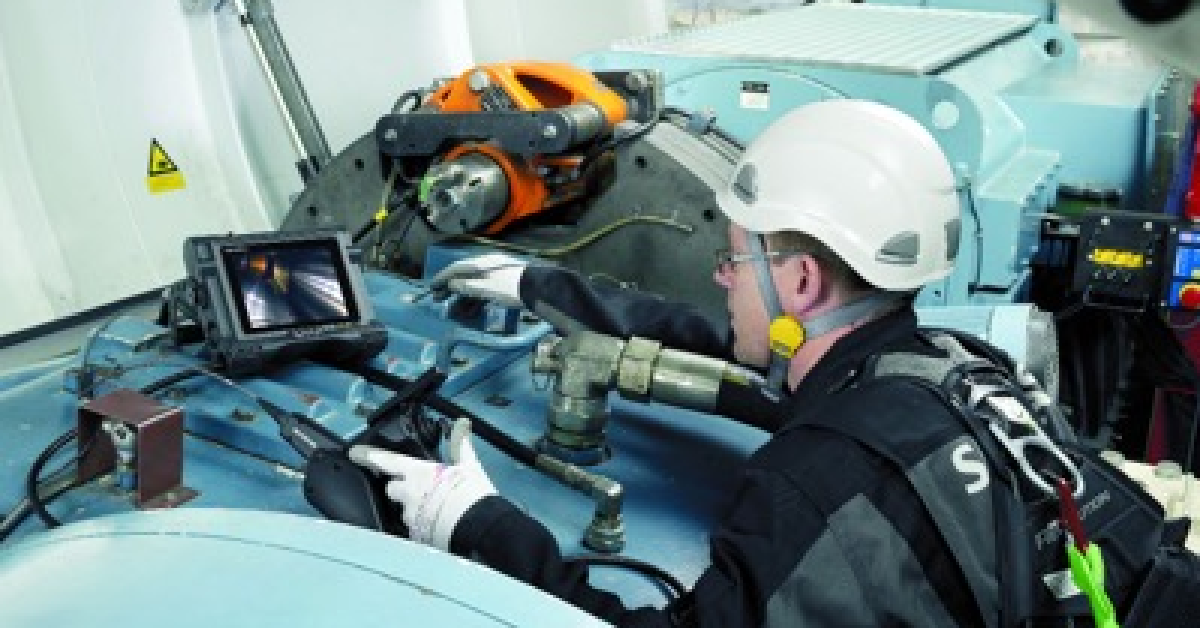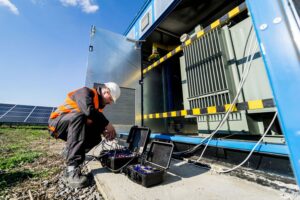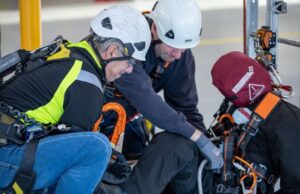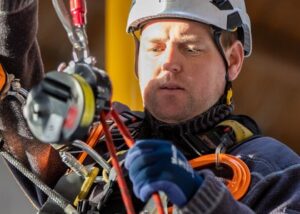A Pathway to a Promising Career
The renewable energy sector is booming, and wind energy is at the forefront of this green revolution. Wind technicians, also known as wind turbine technicians or wind techs, play a crucial role in maintaining and servicing the wind turbines that convert wind energy into electricity. With the wind energy industry experiencing significant growth, particularly in the United States, becoming a wind technician offers a stable and rewarding career path. Programs like STL USA’s WindStart Get Into Wind exist to help those looking to get into this exciting sector in the most efficient way possible.
Industry Growth Potential in the USA
The U.S. wind energy industry has seen remarkable growth over the past decade, driven by increasing demand for clean energy, technological advancements, and supportive government policies. According to the U.S. Department of Energy, wind power capacity in the U.S. reached 139 gigawatts by the end of 2021, providing enough electricity to power over 38 million homes annually. Furthermore, the industry supports over 120,000 jobs, with wind technicians being among the fastest-growing occupations.
The Bureau of Labor Statistics (BLS) projects that employment of wind turbine technicians will grow by 61% from 2019 to 2029, much faster than the average for all occupations. This surge is largely due to the increasing number of wind farms being constructed and the need for regular maintenance of existing turbines to ensure they operate efficiently.
The Role of a Wind Technician
Wind technicians are responsible for installing, inspecting, maintaining, and repairing wind turbines. Their duties include troubleshooting electrical, mechanical, and hydraulic components, performing routine inspections, and ensuring that all systems comply with safety standards. Given the technical nature of the job, wind technicians must be proficient in a variety of skills and comfortable working at heights.
Steps to Become a Wind Technician
Educational Requirements: The first step towards becoming a wind technician is to obtain a high school diploma or GED. High school courses in mathematics, physics, and computer science can provide a solid foundation.
Enroll in a Wind Energy Training Program: Specialized training is crucial for aspiring wind technicians. Many community colleges and technical schools offer certificate and associate degree programs in wind energy technology. These programs typically cover subjects such as electrical systems, hydraulic systems, safety protocols, and climbing techniques. They also provide hands-on training with wind turbine components and simulators.
Some renowned training providers include:
– Texas State Technical College
– Lake Region State College
– Iowa Lakes Community College
– Northeast Community College
On-the-Job Training:
After completing a formal training program, aspiring wind technicians usually undergo on-the-job training. This involves working under the supervision of experienced technicians to gain practical experience. This period of training can last several months and is essential for mastering the specific requirements of different turbine models and manufacturers.
Certification:
While certification is not mandatory, it can enhance job prospects and demonstrate a commitment to the profession. The North American Board of Certified Energy Practitioners (NABCEP) offers certification for wind technicians, which is recognized by many employers in the industry. Alongside Nationally recognized certification the industry body, The Global Wind Organisation (GWO), produces a series of safety standards which form the basis of GWO training a key requirement for field based personel.
Continuing Education:
The wind energy industry is constantly evolving, with new technologies and regulations emerging regularly. Therefore, continuous learning and staying updated with the latest advancements in the field are crucial. Many employers provide ongoing training opportunities, and technicians can also attend industry conferences and workshops.
Importance of Training Providers
Quality training providers are vital for producing competent and skilled wind technicians. These institutions not only equip students with the necessary technical knowledge but also emphasize safety, which is paramount in this field. Wind technicians work in potentially hazardous environments, often at great heights and in varying weather conditions. Proper training ensures they are well-prepared to handle these challenges safely and efficiently.
Training providers also play a key role in bridging the gap between education and industry needs. They often collaborate with wind energy companies to ensure their curricula are aligned with industry standards and technological advancements. This collaboration helps produce graduates who are ready to meet the demands of the workforce and contribute effectively from day one.
Job Outlook and Opportunities
The job outlook for wind technicians is exceptionally positive. The expansion of wind farms across the U.S., particularly in states like Texas, Iowa, and Oklahoma, is creating a steady demand for skilled technicians. Additionally, the Biden administration’s commitment to renewable energy and the goal to achieve 100% clean electricity by 2035 are likely to further boost job opportunities in the wind energy sector.
Wind technicians can advance their careers by gaining experience and additional certifications, potentially moving into supervisory or managerial roles, or specializing in areas such as blade repair or control systems.
Conclusion
Becoming a wind technician offers a pathway to a dynamic and growing career in the renewable energy sector. With the U.S. wind energy industry poised for continued expansion, there is a strong demand for well-trained and skilled technicians. By following the outlined steps—obtaining the necessary education, enrolling in a reputable training program, gaining practical experience, and pursuing certification—aspiring wind technicians can embark on a fulfilling career that contributes to a sustainable future.
Want to get Into Wind?
Click the button to learn more




